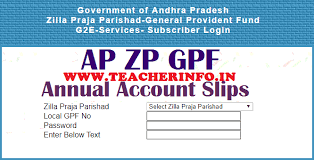New Education Policy 2020 Announced:

ప్రస్తుతం 14 ఏళ్ల లోపు విద్యార్థులకు అందిస్తున్న నిర్బంధ విద్యను నూతన విద్యా
విధానం ద్వారా మూడేళ్ల నుంచి 18 ఏళ్ల లోపు విద్యార్థులకు పొడగించారు. 2025 నాటికి
ప్రీ-ప్రైమరీ విద్యను విస్తృతం చేయడం,ప్రతీ ఒక్కరూ సాధారణ అక్షరాస్యత సాధించడమే
లక్ష్యంగా కొత్త పాలసీని రూపొందించారు. లభ్యత,నాణ్యత,సమానత్వం,జవాబుదారీతనం
ప్రాతిపదికన దీన్ని రూపొందించారు.
నూతన విద్యా విధానంలో పిల్లల వయసు కంటే వారి జ్ఞాన అభివృద్ది దశల ఆధారంగా 5+3+3+4
పద్దతిలో విద్యా విధానాన్ని రూపకల్పన చేశారు. దీన్ని ఫౌండేషనల్
స్టేజ్(3-8ఏళ్లు-గ్రేడ్స్
1-2),ప్రీ-ప్రైమరీ,ప్రిపరేటరీ(8-12ఏళ్లు-గ్రేడ్స్-3-5),మిడిల్
స్టేజ్(11-14ఏళ్లు-గ్రేడ్స్-6-8),సెకండరీ స్టేజ్(14-18ఏళ్లు-గ్రేడ్స్-9-12)గా
విభజించారు. ఇంటర్ విద్యను పూర్తిగా రద్దు చేశారు. డిగ్రీ కోర్సుల కాల పరిమితిని
నాలుగేళ్లకు పొడగించారు. నాలుగేళ్ల డిగ్రీ కోర్సులో రీసెర్చ్ను కూడా భాగం చేసే
అవకాశం ఉంది.
కొత్త విద్యా విధానంలో విద్యార్థులు కళలు, మానవతా శాస్త్రాలు, క్రీడలు, ఇతర
వృత్తిపరమైన సబ్జెక్టుల అధ్యయనానికి అవకాశం కల్పించారు. అలాగే 2-8ఏళ్ల వయసు నుంచే
ఒకటి కంటే ఎక్కువ భాషలు నేర్చుకునేలా విద్యా విధానాన్ని రూపొందించనున్నారు.
దేశవ్యాప్తంగా 8 స్థానిక భాషల్లో ఈ-కోర్సులను అందుబాటులోకి తీసుకోనున్నారు. ఐదో
తరగతి వరకూ అన్ని స్కూళ్లలోనూ మాతృ భాషలోనే విద్యా బోధనా జరిగేలా చర్యలు
తీసుకోనున్నారు. 21వ శతాబ్దానికి అవసరమైన నైపుణ్యాలను విద్యార్థుల్లో పెంచేలా
పాఠ్యాంశాల రూపకల్పన చేయనున్నారు. ఇందుకోసం ఆరో తరగతి నుంచే విద్యార్థులకు
ప్రత్యేక పాఠ్యాంశాలు బోధించనున్నారు. ఇప్పటిలా బోర్డు పరీక్షల్లో విద్యార్థుల
ఆలోచనా శక్తిని కాకుండా జ్ఞాన శక్తిని పరీక్షించేలా పరీక్షల రూపకల్పన
చేయనున్నారు.
కొత్త విద్యా విధానంలో సంస్కృతానికి ప్రాధాన్యత కల్పించనున్నారు. సంస్కృత విశ్వ
విద్యాలయాలకు కూడా పెద్ద పీట వేయనున్నారు. దేశవ్యాప్తంగా ఉన్నత విద్యా సంస్థల్లో
ప్రవేశాల కోసం నేషనల్ టెస్టింగ్ ఏజెన్సీని ఏర్పాటు చేయనున్నారు. ఇకనుంచి
పరిశోధనలో ఎంఫిల్ను పూర్తిగా రద్దు చేయనున్నారు. అకడమిక్ క్రెడిట్ స్కోర్ను
డిజిటల్ పద్దతిలో నిక్షిప్తం చేసేలా అకడమిక్ బ్యాంక్ ఆఫ్ క్రెడిట్(ABC)ని ఏర్పాటు
చేయనున్నారు.
New Education Policy – Key Highlights for School Education
- Universalization of Early Childhood Care Education (ECCE)
- National Mission on Foundational Literacy and Numeracy
- Alternative Pedagogical Structure of 5 + 3 + 3 + 4
- Multidisciplinary Course curriculum abolishing stream based education structure
- Curriculum to Integrate 21st Century Skills – Mathematical Thinking and Scientific Temper
- No rigid separation between Curricular and Extra Curricular Activities
- No rigid separation between Vocational & Academic Streams
- Focus on identification of Gifted Children and their grooming
- Kasturba Gandhi Vidhyalayas to be upgrated to Class 12
- Project-based learning, experiential learning
- Vocational training to begin from 6th Class onwards
- Internships to be integrated as part of vocational training
- New Education Policy 2020: Key Highlights for Higher Education
- In the press meet, HRD Ministry outlined the key highlights of the New Education Policy 2020 for Higher Education. Under the NEP 2020, the government plans to acheive 50% Gross Enrolment Ratio by 2035. Other Highlights include:
Holistic & Multidisciplinary Education – Flexibility of Subjects
- Mutliple Entry / Exit for Students
- UG Programme – 3rd / 4th Year
- PG Programme – 1st / 2nd Year
- Integrated 5 Year Bachelor’s Programme
- Phil Programme to be Discontinued
- Single Regulator for Higher Education – MERU (Modal Multidisciplinary Education & Research University)
- Credit Transfer for Students
- Academic Bank of Credits to be Created
- Autonomy to Higher Education as per their NAAC Accreditation
New Education Policy 2020 Released https://t.co/WF3exI6aA4
— Education Reporter (@EducationRepor2) July 29, 2020








